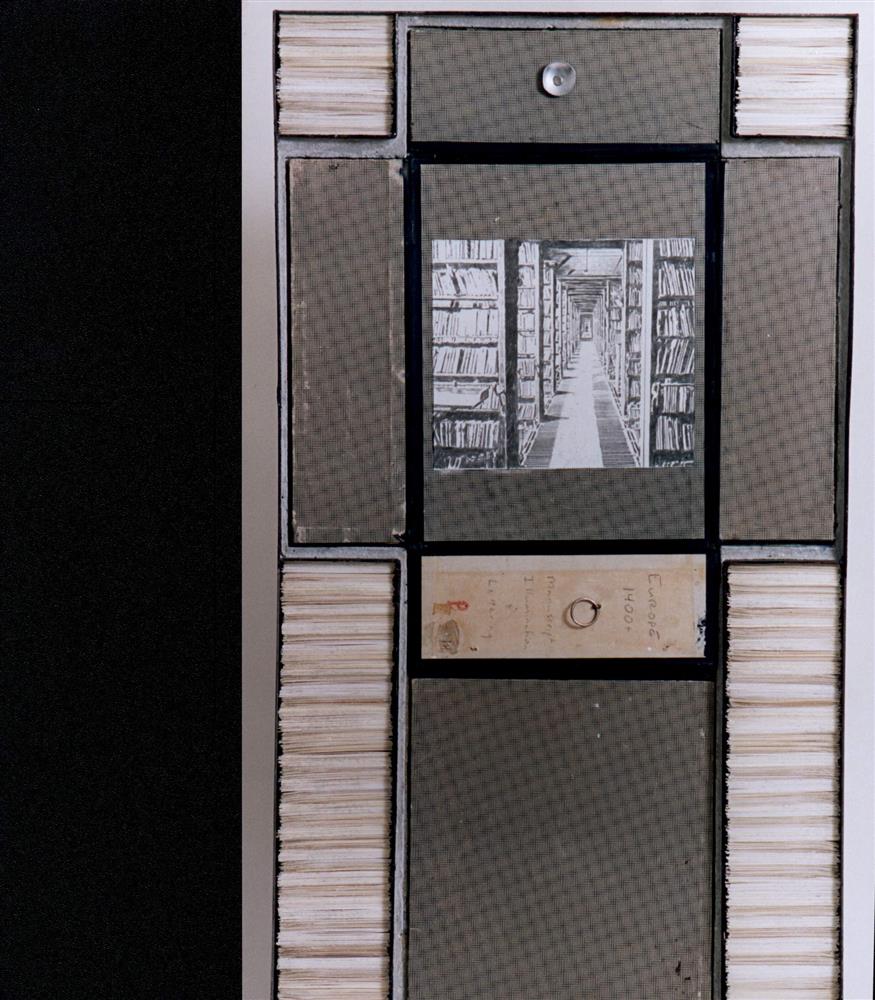
Lilac Sasson’s current exhibition is comprised of several series of works, each bearing a special character and at the same time functioning as an integrated complex.
The common content in all the variegated series is the evacuation and disintegration which results in oblivion and absence .
By means of the irregular combinations of materials – stone, paper, concrete, photography
and lead – and the use of varied techniques such as – photography, drawing on copy-paper, molding and minting, Lilac Sasson aspires to convert her perceptions to a physical , material dimension .
“The Lost Libraries” displayed at the entrance to the permanent exhibition in the Judaica hall of the Mishkan Le’Omanut, describes the spaces of French national libraries, public institutions and archives , which in effect have ceased to function as such. Lilac Sasson found photographs of these libraries in an old book, 1950’s edition, on photographic art , and copied them by a process of precise drawing. The drawings acquire an additional significance because they are affixed to the backs of old library files, which when fully opened create a form resembling a cross embedded in an oblong concrete cast. The process of copying and minting, in addition to its formative symbolism, stows the spaces of the lost libraries with a new sensitive-valued load.
Two series of photographs were photographed in the Louvre museum in Paris and the museum of archeology in Naples. In the adjacent room you can see works placed on the floor- classical monuments, which were removed from the storerooms in the Louvre and politely placed in the rear courtyard of the museum. In juxtaposition , the works exhibited along the length of the corridor,the appearance of fragments of an exhibition of frescoes from Naples, notable among them is the presence of the absent – the exhibit taken off the wall for some unclear reason , leaving behind only a burnt memory on the faded wall.
On the two stages in the centre of the judaica display Lilac Sasson has setup an installation which also comes to terms with questions related to memory and its fragmentation. The broken marble, the lead imbedded in it and the drawers from the national library that remained without use, conduct a fascinating dialogue with the Mishkan Le’Omanut’s judaica collection – liturgical objects that have ended their ritual and ceremonial function and serve only as documents of heritage and memory.

